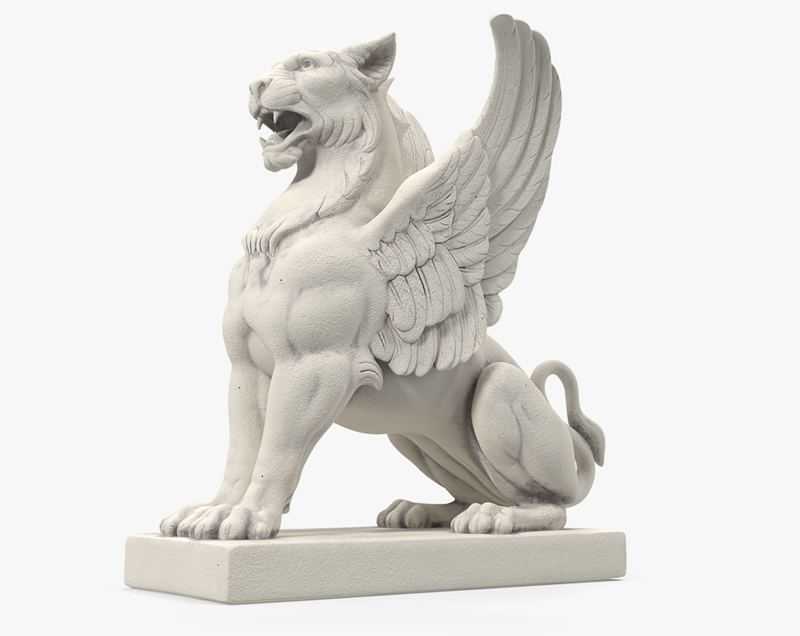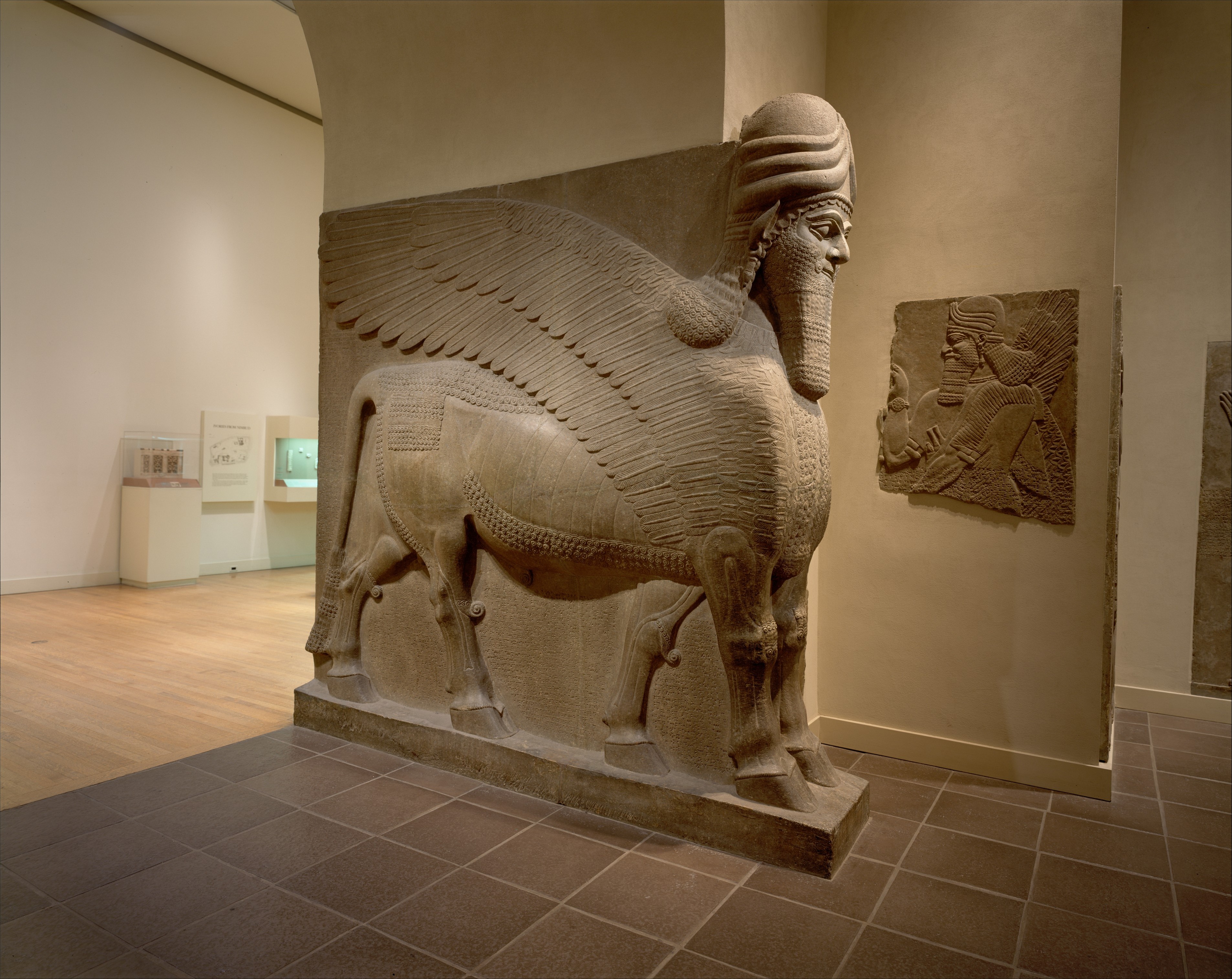Grace, Power, Pride are words synonymous to Lions. But what about a Winged Lion?...

The lion is called the king of the jungle and is a fascinating creature of the animal kingdom. Aside from the natural world, it also holds a special place in mythology as a winged lion.
The winged lion mythology is prevalent in numerous cultures, notably in Mesopotamian, Persian, and Egyptian mythology. The winged lion is a mythical creature, known in some cultures as the Griffin – a creature with lion and eagle features.
It has been widely used in the art world in paintings and sculptures, especially as winged lion statues, in literature, and even depicted on flags. While most people are familiar with lion symbolism, which represents courage, nobility, royalty, strength, grandeur and fearlessness, not many know about winged lion symbolism.
Although there is a different meaning for lion with wings in different cultures, a lion with wings is widely known as a griffin. Dating back to ancient times, the Lion of Saint Mark is a winged lion that symbolizes Saint Mark the Evangelist, patron of Venice. St. Mark’s symbol is the eagle-lion creature, which is the traditional symbol of Venice and earlier belonged to the Republic of Venice.
It symbolizes an immediate and unique identity with power. But what else does a lion symbolize, what is a winged lion called, and what is the meaning of winged lion?

In various mythologies, including Greek, a mythical creature lion with wings – with the body of a lion, the head of an eagle and wings is called a griffin. This mighty creature represents mastery of the earth and sky and is linked with might and wisdom. The griffin was the most popular and the best ornamental motif in the ancient Middle East and Mediterranean region
Although there is no documented origin time for the griffin as an art symbol, it probably originated in the Levant in the 2nd century BC. By the 14th century BC, these marvelous creatures had spread throughout Western Asia and into Greece both in paintings and sculptures.
The lion with wings gave people a symbol of beauty, power, and strength. The winged lion in Greek mythology is still strong in popularity.
The winged lion symbolism can be found in several cultures. The widely known symbol of a winged lion is for the patron saint, the evangelist, and Saint Mark. This mythological symbol features a lion with wings like a bird.
Aside from being a traditional symbol of Venice, the winged lion meaning also represents wisdom, knowledge and a sword that represents the universal symbol of justice. Although it doesn’t have an official or political meaning, the winged lion has a popular and religious origin.
The lion with wings is the emblem of the popular tourist destination that is the lagoon city of Venice, of the ancient Serenissima Republic, of the municipality, of the province, and of the Veneto region of Italy. It is also a part of the coat of arms of the Italian Navy.
Moreover, this mythical lion with wings is widespread in the squares and historical buildings of all the cities that have been ruled by the Serenissima Republic. The lion with wings is also present on the Venetian badges of civil, military, and religious use, both in the flags and on the coins.
There have been many popular depictions of the winged lion throughout history across the world. It can be found in literature, in winged lion statues, griffin lions with wings and so on. Read on to know more about various representations of winged lion mythology

The winged lion of Venice is one of the most popular mythical lions with wings in human history. It is the symbol of St. Mark, the Evangelist, who was also an Apostle. Saint Mark is considered the patron saint of Venice after his body was stolen from a grave in Alexandria, Egypt.
A symbol of St. Mark, the Lion of Venice is an ancient bronze-winged lion statue in the Piazza San Marco in Venice, Italy. The sculpture is poised atop one of the two large granite columns in the Square, which bear ancient symbols of the two patron saints of the city.
This winged lion statue is a composite of different pieces of bronze that were created at different times. It has undergone wide-ranging restoration and repair work many times in history. According to historians, the original statue was likely significantly different from the current figure. Many believe that before Christianity, the lion may not have at first any link with Saint Mark.

The Griffin was once considered a Christian symbol for the Church’s ideals on the institutions of matrimony. It also symbolized Jesus Christ at some point in history. The Griffin is a mythological creature with the body, tail and back legs of a lion, morphed with the head and wings of an eagle; it sometimes is depicted with an eagle’s talons as its front feet.
There have been several Griffin symbol meanings, although it mostly symbolizes power, royalty and bravery.
But what does a Griffin represent? Well, by the Middle Ages, the symbol of eagle with lion body was thought to be a particularly majestic and powerful being. The reason was quite simple: the lion has been considered the king of the land and the eagle the king of the skies, making the Griffin one dominant and intimidating creature.
The Griffin is one of the most popular mythological beings of ancient Greek. The Roman lion symbol with wings was also associated with the sun god Apollo, as it was as intense as the sun and was worthy of fear and respect. In several Greek and Roman texts, griffins were linked with gold deposits in Central Asia.

The symbol of Lamassu was initially depicted as a goddess in Sumerian times and was called Lamma. However, in Assyrian times it was depicted as a hybrid of a human and a bird with either a bull or lion. It usually has a body of a bull or winged lion, and bird wings and is called Lamassu. In some literature, the symbol is associated with a goddess.
It symbolized intelligence and power. The eagle wings are linked with the sun god who controls and enhances the features of the lion, whereas the human head represents the intelligence of the winged lion creature. The lion with wings has spiritual meaning and is usually associated with several gods and goddesses in various cultures.
The Lion of Venice is probably the first winged lion statue in human history. As the lion sculpture has had a very long and somewhat obscure history spread throughout art history. The Lion of Venice is the ancient bronze-winged lion statue in the Piazza San Marco of Venice, Italy. It is thought to be made between 1172 and 1177 or about 1268. It bears the ancient symbols of the two patron saints of Venice.
There are three most famous and fascinating winged lion statues with marvelous history. The most famous are the Lion of Venice, then the Griffin – originating from ancient Greek, and the winged lion of Lamassu.
The winged lion symbolism is prevalent in several cultures with different meanings. The most well-known symbol of a winged lion is for the patron saint, Saint Mark of Venice. This mythological symbol is often depicted with a lion having wings like a bird. Aside from being a traditional symbol of Venice, the winged lion meaning also represents wisdom, knowledge and a sword, demonstrating the universal symbol of justice.
Although it doesn’t have an official or political meaning, the winged lion has a popular and religious origin. It is often associated with Jesus in its spiritual meaning. The lion with wings can also be seen on the Venetian badges of civil, military, and religious use, both in the flags and on the coins, making it a true part of Venetian history
There have been several famous representations of the winged lion throughout humankind’s history across the world. It is widely discussed in the literature, depicted beautifully in winged lion statues, griffin lions with wings, and so on.
It is not uncommon to witness lion statues in people’s front yards or back gardens. A pair of lion statues placed in a driveway or front porch symbolizes prosperity for the family. On the other hand, the winged lion statues are gaining popularity due to their cultural, historical and spiritual representation.
They are commonly used in traditional Chinese architecture and can be seen in Chinese palaces, temples, bridges, pagodas, gardens, mansions, tombs and several architectural structures. The sculptures are often placed in pairs on either side of an entrance.
In ancient Greek and Roman civilizations, people placed winged lion statues or griffins outside their homes as a symbol of prosperity, power, bravery, wisdom, and royalty among others. These marvelous mythical winged lions are still being used for their spiritual meaning and majestic beauty. Buddhism considers the lion a sacred being, which represents peace and can bring peace, happiness and positive energy.
Many people opt for customized winged lion statues to be installed in their homes and outdoor spaces for various representations. Although in ancient times, winged lions were sculpted out of clay, metal or stone, recent times offer slightly more options when it comes to materials, even in natural stone.
Several materials can be used for statuary, including resin, plastic, several metals, concrete, marble, granite, and so on. The natural stones that you can choose to customize your winged lion statue are limestone, onyx, marble, granite, and quartz; although marble may be the safest and the most popular option you can possibly pick.
Most sculpture or statue makers hand-carve the winged lion sculptures to give each one a distinctive quality. We meticulously carve the statues from solid blocks of natural stone to ensure as many intricate details as possible and to preserve the natural characteristics of the stone that usually get chipped away while sculpting.
First, the large chunks of the stone are chiseled to give a rough shape to the sculpture. Then, the smaller features are carved with incredible detail. Our winged lion statues are one of a kind and can be customized in different sizes and shapes in various stone and metal materials to fit customer requirements.
Big and heavy statues are often very difficult to ship. However, we make sure to pack these powerful and impactful artworks in as much padding as possible to ensure their safety over small or long journeys they may have to take to reach your doorstep. We can ship these majestic creatures by ship, air, or land, depending on where you are located.
Natural stone statues are the best as they require very little maintenance whether they are installed in your backyard, garden, front patio or indoors. You can clean and maintain them given how much they are exposed to dirt, debris and natural elements such as sunlight and rain.
Simply spray your marble or granite winged lion statue with the hose on a delicate setting if it is installed outside. Then scrub any built up areas with a gentle brush and pat the statue dry with a microfiber cloth. For indoor statues, you can dip a microfiber cloth or tea towel in mild soap and water to gently wipe away any dirt and dust.
As natural stones have been formed over a course of many years under heavy pressure under the surface of the earth, a winged lion statue made from marble or granite can last you for decades, provided you take proper care of it and prevent it from wear and tear of natural elements.